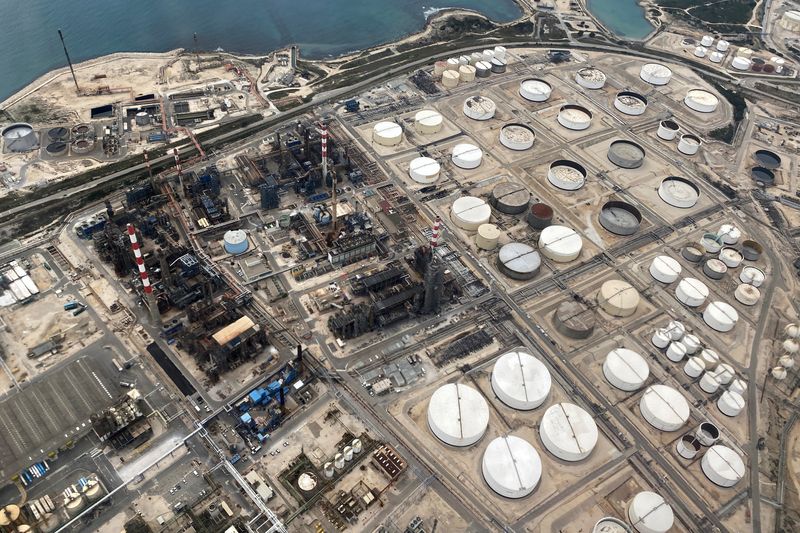
By Erwin Seba
HOUSTON (Reuters) – Oil prices rose more than 1% on Friday as U.S. Federal Reserve Bank Chair Jerome Powell signalled interest rate cuts would be among the central bank’s priorities in the coming months.
Brent crude futures rose by $1.27, or 1.63%, to $78.49 a barrel at 9:50 a.m. CDT (1450 GMT), while U.S. West Texas Intermediate (WTI) crude futures rose $1.33, or 1.81%, to $74.34.
“The pivot by the Federal Reserve is real,” said Phil Flynn, senior analyst at Price Futures Group. “It’s impacting all commodities.
Both benchmarks hit their lowest since early January this week, after the U.S. government sharply lowered its estimate of jobs added by employers this year through March, raising fears of a possible recession.
Powell on Friday offered an endorsed easing the Fed’s policies, saying further cooling in the job market would be unwelcome and expressing confidence that inflation was within reach of the U.S. central bank’s 2% target.
“The upside risks to inflation have diminished. And the downside risks to employment have increased,” Powell said in a highly anticipated speech to the Kansas City Fed’s annual economic conference in Jackson Hole, Wyoming. “The time has come for policy to adjust. The direction of travel is clear, and the timing and pace of rate cuts will depend on incoming data, the evolving outlook, and the balance of risks.”
The U.S. dollar index softened to about 101.45 ahead of the speech. A cheaper greenback typically lifts demand for dollar-denominated oil from investors holding other currencies.
Morgan Stanley said in a note on Friday that a drawdown in oil inventories has provided oil prices with some support.
“For now, the balance in the oil market is tight, with inventories drawing approximately 1.2 million barrels per day in the last four weeks, which we expect will continue in the balance of [the third quarter],” the bank said.
Recent data from China, the top oil importer, has pointed to a struggling economy and slowing oil demand from refiners. A renewed push for a ceasefire in Gaza between Israel and Hamas has also helped ease supply worries and weighed on oil prices.

U.S. and Israeli delegations started a new round of meetings in Cairo on Thursday to resolve differences over a truce proposal.
Ceasefire talks to end the war in Gaza between Israel and Hamas have reduced fears the conflict would impact crude oil supplies.
This post is originally published on INVESTING.



